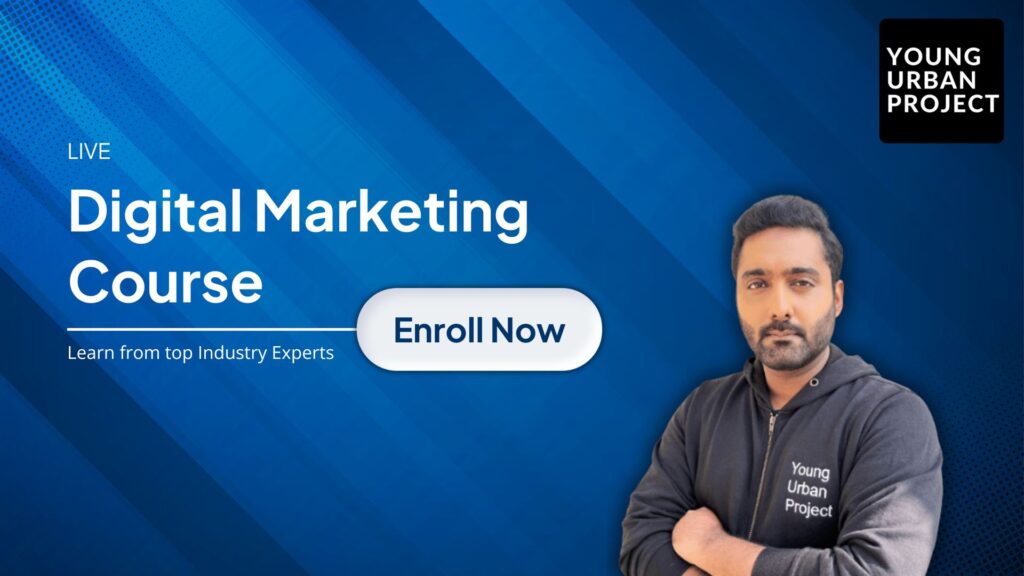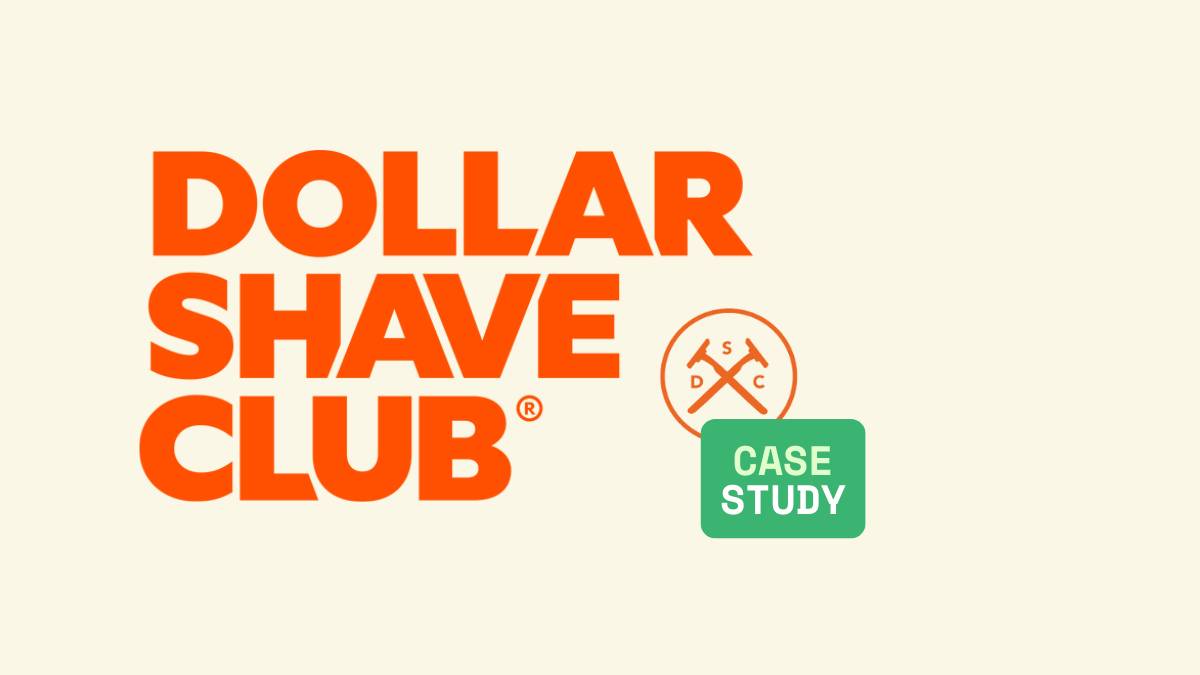Sometimes, all it takes is a clever idea, a bold marketing move, and a bit of humor to shake up an entire industry. That’s exactly what Dollar Shave Club did.
If you’ve ever heard someone say “content marketing can build billion-dollar brands,” they’re probably thinking of DSC.
Why should we study the Dollar Shave Club case study?
Because it’s one of the most perfect examples of how digital marketing, when done right, can transform a boring, monopolized industry into a pop-culture phenomenon.
Quick stat for context: In 2016, Unilever bought Dollar Shave Club for $1 billion. That’s not startup pocket change, that’s unicorn-level success, built on the back of marketing genius.
For founders, marketers, and anyone building a brand today, DSC’s story is a goldmine of actionable lessons. Let’s break it down.
Table of Contents
The Birth of Dollar Shave Club
Founders & Origin Story
Dollar Shave Club was co-founded by Michael Dubin and Mark Levine in 2011.
Michael Dubin wasn’t a razor industry veteran. He was a media and marketing guy. His background? Improv comedy, advertising, and digital media. That turned out to be the perfect combo for what DSC would become.
The frustration that led to DSC’s creation? Buying razors at retail stores was a hassle. You’d go to the store, the razors were locked behind glass cases, they were overpriced, and you’d be thinking, why am I paying this much for a piece of metal with blades?
That was the “aha” moment.
The Problem They Solved: Razor Market Monopolies
Before DSC came along, the razor market was basically dominated by two giants: Gillette (owned by P&G) and Schick. They controlled pricing, shelf space, and marketing narratives.
They also sold razors in ridiculously over-engineered packages, “Now with 5 blades, vibrating handles, and a laser-guided missile!” Okay, I made that last part up, but you get the idea.
Dollar Shave Club’s pitch was refreshingly simple:
🪒 “High-quality razors, delivered to your door, for just a few bucks a month.”
They weren’t inventing razors. They were inventing access and convenience. That’s what made it disruptive.
The Viral Video That Changed Everything
The 2012 Launch Video: “Our Blades Are F**ing Great”
Let’s be real: if you’ve seen that first video, you remember it.
Titled “Our Blades Are F*ing Great”**, DSC’s launch video wasn’t just another startup explainer, it was a comedic, no-holds-barred, “we know you’re tired of overpriced razors” manifesto.
Written and performed by Dubin himself (remember, improv comedy background), the video opens with him deadpan delivering:
“Hi, I’m Mike, founder of Dollar Shave Club.com. What is Dollar Shave Club? Well, for a dollar a month, we send high-quality razors right to your door. Yeah, a dollar.”
Cue forklifts, machetes, polka dots, and a bear in the background, it was chaotic but controlled chaos.
Why Did the Video Go Viral?
It wasn’t an accident.
Here’s why it worked:
- Humor with a point: Funny, but never pointless. Every joke highlighted why DSC was better.
- Clear, direct messaging: The offer was unmistakable: good razors, cheap, delivered.
- Relatable pain point: Every guy watching thought, “Finally, someone gets it.”
- Strong CTA (Call-to-Action): End of the video? Sign up now. Boom.
Impact: 12,000 Orders in the First 48 Hours
DSC wasn’t prepared for what happened next. The site literally crashed from traffic overload.
Within two days, they had 12,000 paying customers. For a brand that barely existed a week before, that was wild.
That one video launched an empire. And no, they didn’t spend millions on it. The production budget? Roughly $4,500.
Now that’s some ROI.
Also Read: Zara Case Study
Business Model Breakdown
1. Subscription-Based Direct-to-Consumer (DTC)
The real genius of DSC wasn’t just the marketing, it was the model.
They didn’t go through big-box retailers like Walmart or Target (at least not in the early days). They went direct to the customer. This was revolutionary at the time for razors.
Why does this matter?
- Customer relationships: DSC owned the customer data, interactions, and loyalty.
- Predictable revenue: Subscriptions meant steady, recurring income instead of hoping for repeat sales at stores.
- Ease of use for customers: Once you signed up, you didn’t have to think about razors again.
2. Razor + Upsell Strategy
Razors were the entry point. But like any smart business, DSC expanded:
- Shave butter
- Wipes
- Hair care
- Skincare products
This wasn’t random. They used email funnels (we’ll get to that) to cross-sell and upsell, boosting customer lifetime value.
3. Recurring Revenue Advantage
DSC wasn’t a “razor company.”
It was a subscription company in disguise. And that’s why investors got excited. Predictable cash flow = higher valuations.
Also Read: Netflix Case Study
Marketing Strategy: How DSC Won the Internet
This part deserves a deep dive. Let’s go step by step.
1. Content Marketing & Humor
DSC knew early on: if you want to stand out in boring industries, make people laugh. Razors were boring. Bathroom routines were boring. So, they made everything else entertaining.
From emails to product descriptions, everything had that same slightly sarcastic, “we don’t take ourselves too seriously” voice.
That kind of brand consistency builds trust and recognition fast.
2. Influencer & Social Media Play
YouTube was DSC’s playground.
They leveraged:
- Small influencers in the lifestyle/grooming space
- Relatable YouTubers
- Partnerships that didn’t feel like ads
On social media, their tone was conversational, meme-friendly, and quick to jump into trending topics, something their competitors could never pull off.
3. Email Marketing & Funnels
If the viral video brought people in, email kept them there.
Their email strategy was clever:
- Funny welcome sequences
- Regular product promos
- Subtle upsells (“Running low on blades?”)
- Customer surveys that didn’t feel boring
They also segment their lists. New customer? Different emails than someone who’s been around for 6 months.
4. Growth Hacks
DSC didn’t stop at just being funny. They played smart too:
- Referral programs: “Invite a friend, get free razors.”
- Waitlist hacks: FOMO (Fear of Missing Out) worked wonders during early launches.
- PR stunts: Their founder, Mike Dubin, became a media darling, landing interviews everywhere from Fast Company to Bloomberg.
They blended humor with real growth tactics, a rare combo.
Also Read: Uniqlo Case Study
Digital Marketing Lessons from DSC
So, what can you learn from Dollar Shave Club’s wild ride?
Let’s break it down, simply and clearly.
1. Solve a Real Problem First
No amount of clever marketing works if your product is irrelevant.
DSC didn’t invent razors, but they solved a real problem:
Buying razors was annoying and overpriced.
If you’re building a brand or working in marketing, ask yourself:
Is this solving a real frustration for the customer?
Start there. Always.
2. Nail Your Messaging & Creative
Most startups fall into one of two traps:
- They try to sound too “professional” and corporate.
- They overdo it on jokes and forget to actually sell something.
DSC found that perfect middle ground. Humor was the hook, but the message was always about value and ease.
Good creative amplifies a good offer. Bad creative can’t save a bad product.
3. Use Humor… but Stay Relevant
Humor worked for DSC because it was rooted in real frustration. It wasn’t just comedy for the sake of going viral.
When you’re marketing your brand, use humor if it aligns with:
- Your audience’s pain points
- Your brand voice
- Your offer
If you’re selling SaaS software to CFOs, maybe slapstick humor isn’t your thing. But if you’re selling lifestyle products, skincare, or DTC products, humor might be your best friend.
4. Own Your Distribution (DTC > Retail)
DSC didn’t start by fighting for shelf space at Walmart. They went direct.
Direct-to-Consumer (DTC) = Control.
Control over the brand story, customer relationship, pricing, and upselling.

Want to build powerful, repeatable strategies like this?
Learn these frameworks with our Advanced Digital Marketing Course at Young Urban Project.
It’s where we teach you how to build not just campaigns, but sustainable, scalable brands using the exact strategies used by companies like DSC.
Also Read: Amul Case Study
The $1 Billion Exit: Acquisition by Unilever
Let’s talk about that big payday.
Why Did Unilever Acquire DSC?
In 2016, Unilever shocked the consumer goods world by dropping $1 billion in cash for Dollar Shave Club.
Why?
- They wanted a direct-to-consumer (DTC) foothold.
Unilever was great at retail. But DSC was great at connecting directly with customers online. - They wanted a brand with culture.
DSC wasn’t just a razor brand; it was a community. That’s way harder to build than factories or supply chains. - They wanted recurring revenue.
DSC’s subscription model was gold for predictable sales.
Also Read: Dunkin’ Donuts Case Study
Outcome for Founders and Brand Growth
Michael Dubin stayed on as CEO post-acquisition, at least for a few years, to help DSC scale globally.
The brand expanded into new products, new markets, and kept that signature humor intact (although many early fans felt the tone shifted slightly once the big corporation stepped in).
The real kicker?
Dollar Shave Club didn’t just change the razor game, they forced Gillette and others to start their own subscription offerings. They shifted an entire industry’s business model.
And it all started with a $4,500 viral video, a real customer problem, and a smart DTC subscription model.
Also Read: Starbucks Case Study
Key Takeaways & Lessons for Marketers
- Solve a real problem. Don’t invent solutions to fake problems, fix something that’s genuinely annoying for your audience.
- Nail your messaging & creative. Clarity first, cleverness second. Humor works only when the value is obvious.
- Use humor but stay relevant. Funny is great, but only if it makes sense for your audience and brand.
- Own your distribution. Selling direct to your customers gives you control and better margins.
- Keep customer experience at the center. Easy sign-ups, predictable delivery, and treating your customers like humans, that’s what builds loyalty.
FAQs: Dollar Shave Club Case Study
1. Why did Dollar Shave Club succeed so quickly?
Because it solved a frustrating problem with a bold, funny marketing style, and made it super easy for customers to buy. Viral content brought attention; a smart business model kept people around.
2. How did Dollar Shave Club disrupt the razor industry?
They challenged the razor monopolies by going direct to consumers with cheaper prices, subscriptions, and a relatable brand voice. DSC made razor-buying simple, fun, and actually enjoyable.
3. What was unique about Dollar Shave Club’s marketing?
It combined humor with clear selling points. Their content wasn’t just funny, it was strategically written to highlight their offer, solve pain points, and push people to sign up instantly.
4. Is Dollar Shave Club profitable after the Unilever acquisition?
Exact numbers aren’t public, but Unilever has indicated that DSC has played a key role in their DTC strategy. Profitability has likely fluctuated, especially with market competition heating up post-acquisition.
5. What can startups learn from this case study?
Startups can learn that great marketing can beat big budgets if the message is right. Focus on solving real problems, own your channels, and make sure your creative speaks to real people.
6. Is DSC still using the subscription model in 2025?
Yes, though they’ve expanded product offerings, subscription remains a core part of their model. Competitors have caught up, but DSC’s early-mover advantage still gives it a strong foothold.

